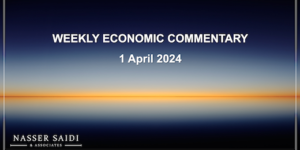Markets
Stock markets had a last uptick before the Christmas holidays and Wall Street scored another record, breathing relief that the start of tapering did not wreak havoc. The yield on the US 10-year Treasury note rose to a high of 3.02% as global stock markets follow the US lead: the MSCI World Index is nearing a 20% gain this year though the MSCI emerging markets index is down almost 5.5%. Regional market were essentially mixed. The euro hit at a 2.5-year high against the greenback and the yen continued posting losses (hitting 105 to the dollar for the first time in five years and a five-year low against the euro) while closer home, the Turkish lira hit a record low following the corruption scandal. Gold prices look set for the biggest drop in 30 years and oil prices were up on the conflict in South Sudan and assorted tensions in the Middle East from Egypt to Lebanon.
Global Developments
US/Americas:
- Durable new goods orders surged 3.5% mom, reversing a decline from the previous month and beating expectations.
- Personal income rebounded somewhat in Nov by 0.2% mom after falling -0.1% in Oct. Wage income gains also rebounded, coming in at 0.3%. Overall prices were flat while core prices rose 0.1% for the fifth month in a row. Real spending increased 0.5% pushed by durable goods
- New home sales in US beat expectations in Nov at a sa annualized rate of 464k units which represents a -2.1% mom drop and +16.6% yoy. The median sale price of new houses in Nov increased to $270,900.
- Initial jobless claims dropped by 42k to 338k exceeding expectations. The four-week moving average increased to 348k from 343,750 in the prior week. Continuing claims rose 46,000 to 2.923 million. A million are expected to lose Federal financial aid after Congress refused extension of emergency aid.
Europe:
- The Conference Board leading economic index for the euro zone increased to 110.4 in Nov from a revised 109.9 in Oct. The coincident economic index was unchanged at 101 in Nov.
- Italy’s consumer confidence fell to 96.2 in Dec from 98.2 in Nov, which could signal another quarter of weak or negative growth.
Asia and Pacific:
- China interbank market was again showing signs of distress, not unlike the soaring rates in June, yet disturbing enough to require direct intervention of the central bank. Jitters among lenders have eased following the PBC’s symbolic decision to inject RMB 29 bn ($4.8bn) into the financial system on Tuesday though the size of intervention was minuscule compared to the RMB 100 trn interbank market.
- Singapore‘s industrial production slowed to 3.9% yoy in Nov, from a revised 8.3% in Oct. Electronics production was the star performer for a third consecutive month, suggesting the global tech cycle has passed its trough. Weakness in pharmaceuticals was exacerbated by a base effect.
- Thailand’s private consumption contracted -2.4% yoy in Nov following a near flat growth in Oct. Political unrest is taking its toll on household consumption and will persist over the coming months.
Bottom line: During the holidays season in the US and Europe few data were released, hence the macro picture has not changed. The most interesting aspect at end 2013 is the start of normalization in US Fed unorthodox monetary policy. The success of this strategy remains crucially dependent on using artificially-high asset prices to alter household and company economic behaviour. For energy commodity the picture in 2014 is mildly downbeat. According to the IMF the likelihood of prices for WTI falling below $90/b and Brent below $100/b next year (12 months forward) is about 40% compared to 50% a month ago. Yet the probability of WTI below $150/b has increased to 0.8% from 0.6%, while the likelihood of WTI above $110 has decreased to 13.5% from 16.4%. Likewise the probability of Brent below $60 is 1.2% compared to 0.3% a month ago.
Regional Developments
- Saudi Arabia’s Finance Ministry presented a SAR 855bn budget last week for 2014, a modest 4.3% yoy increase and the slowest rate of planned spending growth in a decade, with SAR 210bn allocated for education and SAR108bn for health services. A surplus of SAR 206bn is expected in 2013, equivalent





